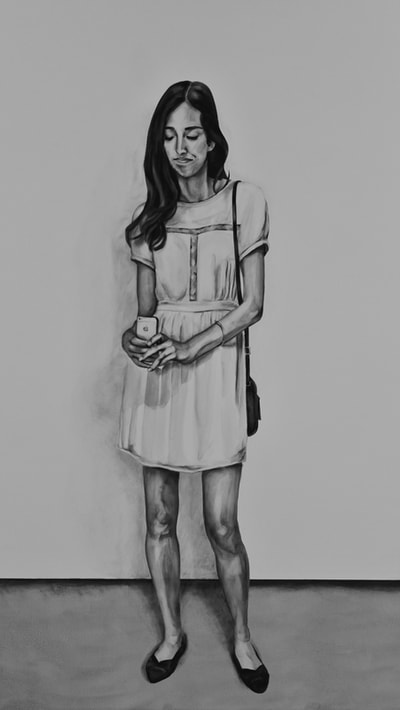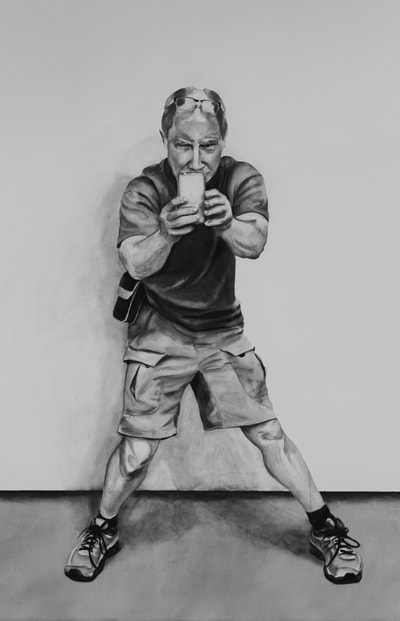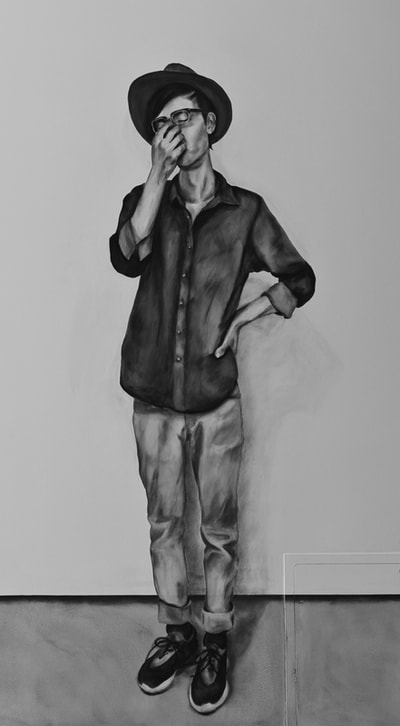Gap,
The Reach Gallery Museum
2017
The Reach Gallery Museum
2017
Sage Sidley explores concepts of place, time, and memory in the context of site-specificity and urban ideologies. The artist frequently creates her work directly onto architectural surfaces, as she has done for this exhibition. In doing so, she engages with notions of the ephemeral, and challenges perceptions of space and reality.
Sidley’s installation examines how cellphone photography has become a form of interpersonal communication. Cellphone pictures are associated with identity construction, and a proliferating range of social and cultural activities now revolve around this technology.
Though the photograph has been considered a faithful way to reproduce visual reality, the rise of digital imaging and social media has made us critically aware that photographic images are frequently constructed and altered. Sidley’s work asks viewers to question what we use photos for.
The experience of looking at art is increasingly mediated through digital screens and shared through social media sites, changing galleries from sites where we primarily engage in seeing, to sites where we concentrate on being seen.
Technology is dramatically influencing in-person experiences, and many galleries and museums are responding by programming exhibitions that encourage the creation and dissemination of digital imagery. Sidley’s work simultaneously participates in and critiques this trend. The artist’s drawing distorts the architectural space by creating an illusion to extend the floor and her hyper-realist subjects are, somewhat ironically, drawn from photographic source material. While we look at these life-sized figures, they gaze back at us from the gallery walls through their hand-held devices, constituting us as subjects on view.
- Chantelle Fawcett, Curator
Sidley’s installation examines how cellphone photography has become a form of interpersonal communication. Cellphone pictures are associated with identity construction, and a proliferating range of social and cultural activities now revolve around this technology.
Though the photograph has been considered a faithful way to reproduce visual reality, the rise of digital imaging and social media has made us critically aware that photographic images are frequently constructed and altered. Sidley’s work asks viewers to question what we use photos for.
The experience of looking at art is increasingly mediated through digital screens and shared through social media sites, changing galleries from sites where we primarily engage in seeing, to sites where we concentrate on being seen.
Technology is dramatically influencing in-person experiences, and many galleries and museums are responding by programming exhibitions that encourage the creation and dissemination of digital imagery. Sidley’s work simultaneously participates in and critiques this trend. The artist’s drawing distorts the architectural space by creating an illusion to extend the floor and her hyper-realist subjects are, somewhat ironically, drawn from photographic source material. While we look at these life-sized figures, they gaze back at us from the gallery walls through their hand-held devices, constituting us as subjects on view.
- Chantelle Fawcett, Curator








